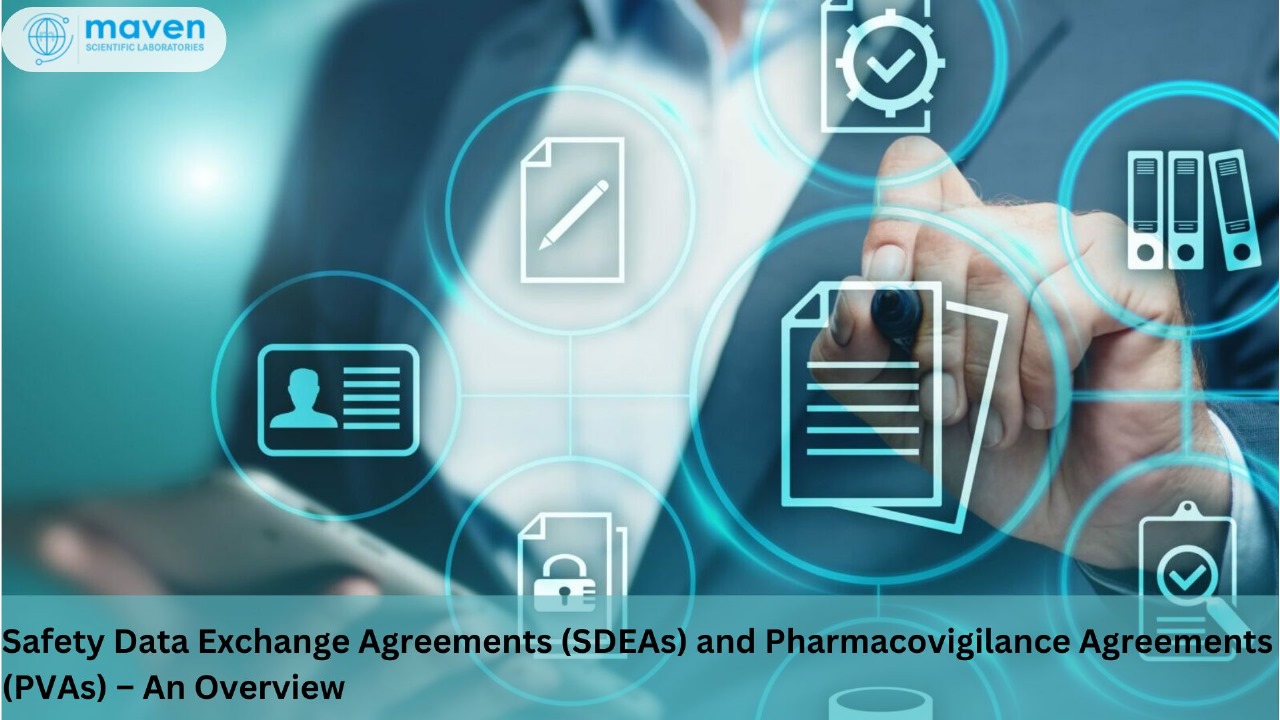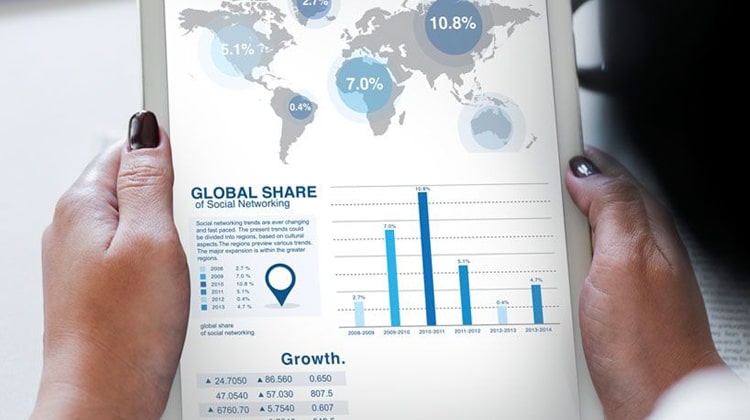
Safety Data Exchange Agreements (SDEAs) And Pharmacovigilance Agreements (PVAs) – An Overview
In the ever-evolving pharmaceutical landscape, ensuring drug safety and compliance with regulatory requirements is paramount. Safety Data Exchange Agreements (SDEAs) and Pharmacovigilance Agreements (PVAs) play a crucial role in establishing clear responsibilities and communication channels between pharmaceutical companies, marketing authorization holders (MAHs), distributors, and partners. This blog explores the importance of these agreements, their key components, their role in regulatory compliance, and how Maven can support organizations in drafting, managing, and ensuring compliance with SDEAs and PVAs.
What are SDEAs and PVAs?
Safety Data Exchange Agreements (SDEAs):
- SDEAs are legally binding agreements between two or more parties involved in the development, manufacturing, or commercialization of a pharmaceutical product.
- They outline the responsibilities of each party for pharmacovigilance activities, including adverse event reporting, signal detection, and risk management.
- The goal is to ensure timely and accurate exchange of safety data to meet regulatory obligations and avoid delays in safety reporting.
- SDEAs are particularly crucial in cases involving partnerships, co-development, or licensing agreements, where multiple stakeholders share safety responsibilities.
Pharmacovigilance Agreements (PVAs):
- PVAs are similar to SDEAs but are often broader in scope, encompassing all pharmacovigilance responsibilities.
- They define roles and responsibilities for activities such as literature searches, periodic safety update reports (PSURs), signal management, and safety communication.
- PVAs are essential for MAHs when working with contract research organizations (CROs), local representatives, or licensing partners to ensure safety data is managed and exchanged efficiently.
- These agreements often include processes for escalation of safety issues and reporting pathways.
Key Components of SDEAs and PVAs:
- Responsibilities of Each Party:
- Clearly outline tasks related to adverse event reporting, signal detection, periodic reporting, and safety updates.
- Ensure no overlap or gaps in responsibilities between stakeholders.
- Timelines:
- Define specific deadlines for reporting adverse events, safety signals, and updates.
- Include timelines for initial reporting, follow-ups, and escalation protocols.
- Compliance with Local and Global Regulations:
- Ensure alignment with regulatory authorities such as EMA, FDA, MHRA, TGA, and others.
- Include provisions for compliance with region-specific pharmacovigilance requirements.
- Data Security and Confidentiality:
- Implement safeguards to ensure the confidentiality and integrity of sensitive safety data.
- Outline protocols for secure data storage, sharing, and destruction.
- Audit and Oversight Mechanisms:
- Include provisions for regular audits to assess compliance with agreement terms.
- Establish key performance indicators (KPIs) to measure agreement effectiveness.
- Escalation Pathways:
- Define escalation procedures for critical safety events or non-compliance.
- Communication Plan:
- Outline structured communication channels and reporting formats.
- Establish periodic review meetings to assess performance.
Why are SDEAs and PVAs Important?
- Accountability: Ensure clear ownership of pharmacovigilance tasks and responsibilities.
- Regulatory Compliance: Prevent regulatory non-compliance, which can lead to financial penalties, product recalls, or market restrictions.
- Operational Efficiency: Improve coordination and efficiency in safety-related processes.
- Timely Reporting: Enable timely exchange of safety data, reducing risks associated with delayed reporting.
- Risk Mitigation: Facilitate proactive identification and management of safety risks.
- Transparency: Foster transparency and trust between stakeholders.
Challenges in Managing SDEAs and PVAs:
- Complexity of Multi-Stakeholder Agreements: Managing agreements across multiple partners can become complex.
- Regional Regulatory Differences: Diverse global requirements add another layer of complexity.
- Resource Constraints: Organizations may lack the expertise or dedicated teams to manage agreements effectively.
- Data Integration Issues: Ensuring seamless data flow between systems can be challenging.
How Maven Can Help
At Maven, we offer end-to-end support for SDEAs and PVAs, ensuring alignment with international regulatory standards and industry best practices.
- Drafting and Reviewing Agreements:
- Our experts assist in drafting clear, concise, and compliant SDEAs and PVAs tailored to your business model.
- Regulatory Intelligence:
- Provide up-to-date insights into global pharmacovigilance regulations to ensure agreements meet local and regional requirements.
- Gap Analysis:
- Identify and address gaps in existing agreements to mitigate compliance risks.
- Compliance Audits:
- Perform regular audits to ensure adherence to agreement terms and regulatory requirements.
- Training and Awareness:
- Conduct workshops and training sessions to educate stakeholders on their roles and responsibilities.
- 24/7 Pharmacovigilance Support:
- Our team offers round-the-clock support for real-time monitoring and reporting of safety data.
- Custom Solutions:
- Tailor pharmacovigilance agreements to address unique organizational challenges.
Why Choose Maven?
- Deep expertise in global pharmacovigilance regulations.
- A team of highly qualified pharmacovigilance professionals.
- Proven track record in successful SDEA and PVA implementations.
- Commitment to client-centric, customized solutions.
- Proactive and transparent communication channels.
Conclusion:
SDEAs and PVAs are vital tools for ensuring pharmacovigilance compliance, risk mitigation, and public safety. Properly drafted and managed agreements not only prevent compliance breaches but also foster collaboration and trust among stakeholders. Maven’s expertise, experience, and tailored approach make us the ideal partner for managing your pharmacovigilance agreements seamlessly.
For more information on how Maven can support your organization with SDEAs and PVAs, get in touch with our expert team today!







